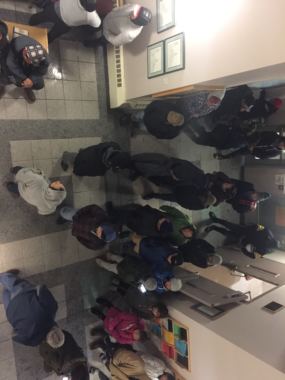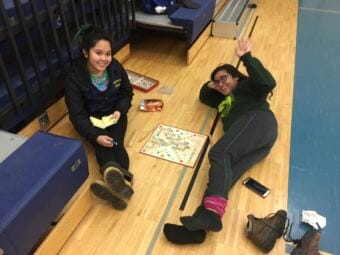
The National Weather Service issued a tsunami warning for nearly the entire Gulf of Alaska this morning, after a magnitude 7.9 earthquake struck 175 miles from Kodiak around 12:30 a.m.
The warning was canceled four hours later.
But Alaskans across the state woke up to the shaking and an emergency alert buzzing their cell phones, warning them to move away from the coast.
In coastal communities like Sitka, Kodiak and Unalaska the alert was followed by tsunami sirens.

Many Sitka residents evacuated to local schools. Mackenzie Bovard said when she saw the alert on her phone, she wondered if it was another false alarm, like the missile alert in Hawaii two weeks ago.
“I didn’t feel very panicked,” Brovard said. “I was like, “Really, do we have to get up? Can’t I just go back to sleep?”
But her family did evacuate, along with hundreds of others. By 2 a.m., when the wave was expected to hit Sitka, the high school was crowded with residents hoping to remain high and dry.
The tsunami warning was downgraded to an advisory around 3:30 a.m.
Ken Macpherson, a watchstander at the National Tsunami Warning Center in Palmer, said a wave of about six inches was recorded in Kodiak.
“So we definitely did have a wave in the Gulf of Alaska tonight,” Macpherson said. Just not a very big one.
Joshua Hector was down by the water in Kodiak when the city’s tsunami siren went off. He ran out and started looking for a ride to get to higher ground.
“I was waving down quite a bit of people,” Hector said. “People were just driving by because they were freaking out. I finally got somebody to stop. A kind lady, she was just leaving the McDonald’s. She was a worker there, I believe. And she said ‘Yes, you can come with me.’ So, thank God she helped me out.”

Hector joined hundreds of people gathered at the Kodiak High School.
In Unalaska, tsunami sirens started wailing just before 2 a.m. Residents were encouraged to move at least 50 feet above sea level.
Around 200 people sheltered at Unalaska’s city hall and the health clinic, including Iata Akopo.
Akopo is new to Unalaska, but in 2009 he experienced a major tsunami at home in Samoa.
“Back in 2009, September 29, our island was hit with tsunami,” Akopo said. “An earthquake, and then not even a minute [later, the] tsunami showed up out of nowhere. We lost loved ones and a lot of people, so I’ve been through this.”
He was relieved that this time was different. After two hours of evacuation, city officials told Unalaskans it was safe to head home.
The Alaska Earthquake Center reported no damage from the quake.
Emily Kwong and Robert Woolsey at KCAW, Sitka; Mitch Borden at KMXT, Kodiak; and Zoe Sobel at KUCB, Unalaska contributed to this report.
